A new series of projects showing the behind the scenes work of landscape architects. The series is starting with the construction projects from Sasaki. This post is first in the “Under Construction” series.
As a firm that works on a broad array of projects around the world, our designers are driven by questions like: “How can we create contextually appropriate and customized solutions? How can we integrate standards of ecology and sustainability in exciting and effective ways? And how can we use our diversity of expertise in planning, landscape architecture, architecture, and civil engineering to drive innovation?”
At the project implementation scale, the answers to these questions are visible in the details of construction methods and practices. Sasaki is currently involved in several projects under construction across the globe. These projects span disciplines and showcase the firm’s perspective on how exceptional built work comes together.
Stream Preservation and Ecological Restoration at the University of Rhode Island
When designing the Brookside Hall student housing complex at the University of Rhode Island, ecology was a key consideration throughout planning, design, and construction. Sasaki paid special attention to the new residence hall’s relationship with the larger watershed because of the site’s location at the edge of a floodplain of White Horn Brook. Before the residence hall was built, the site housed dairy barns and, more recently, a parking lot and maintenance shed for salt storage. Sasaki’s design led to daylighting a portion of White Horn Brook that was partially covered by the parking lot, restoring it to a more natural, ecologically beneficial condition.
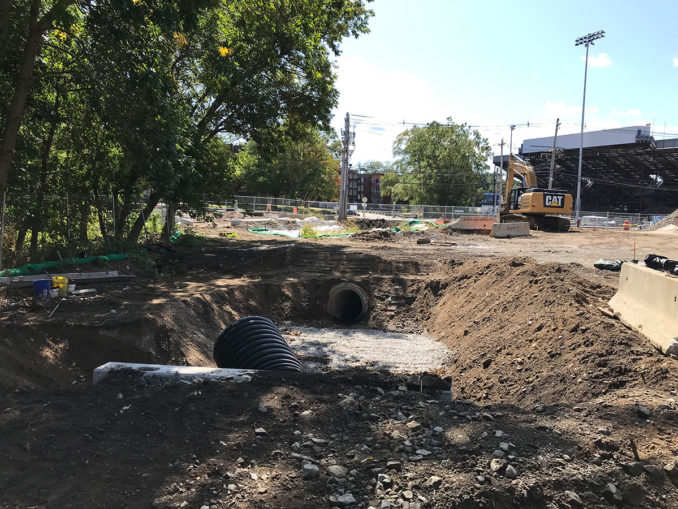
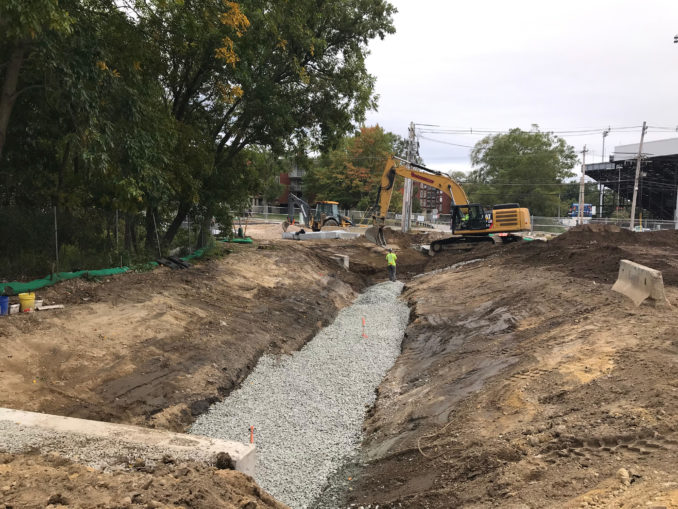
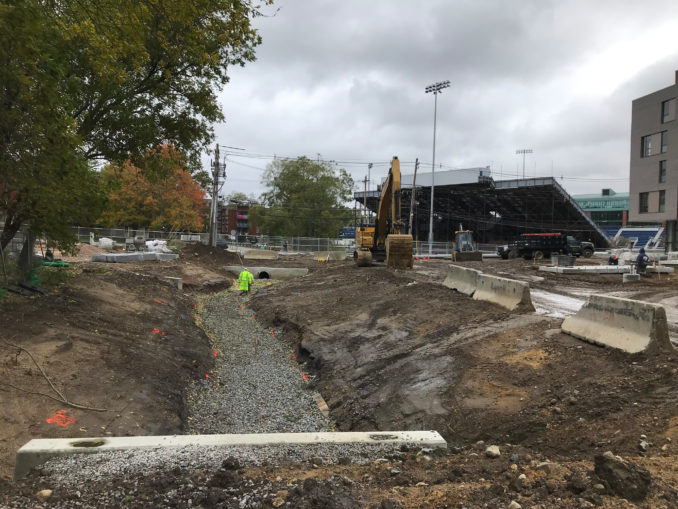
Sasaki ecologists also identified a palette of regionally appropriate, low-maintenance plants that will thrive under the site’s environmental pressures like deer browse and sustained drought. This palette of native grasses, wildflowers, shrubs, and trees provide valuable habitat and food provisions for native wildlife throughout the year. As these plantings mature over time, their impact will be far greater than just their aesthetic value.
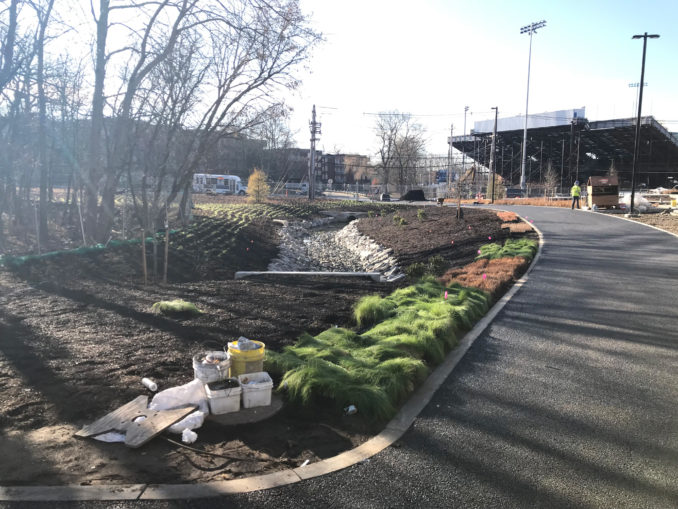
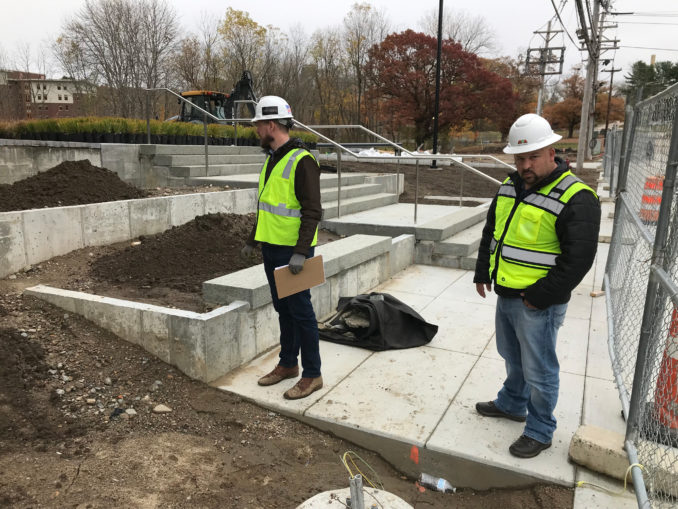
“Often when we think about utilizing an indigenous plant palette, we automatically think about bright flowers and pollinator gardens,” says Sasaki landscape designer Andrew Sell. “While our design includes these landscape hallmarks, we focused more on strategically incorporating host plant species that support pollinators in their many lifecycles. This strategy provisions for visiting species and also creates vital habitat.” During construction administration, the team monitored plant installation to ensure that the selected plant species would thrive under proper planting conditions and also avoided introducing potentially noxious weeds like nutsedge (Cyperus rotundus) to the landscape. According to Sell, productive relationships like these are key to successful construction administration. “This on-the-ground approach is a valuable opportunity for knowledge transfer with contractors,” he says, “which helps ensure that both sides understand the nuances of working with indigenous plants and their biology.”
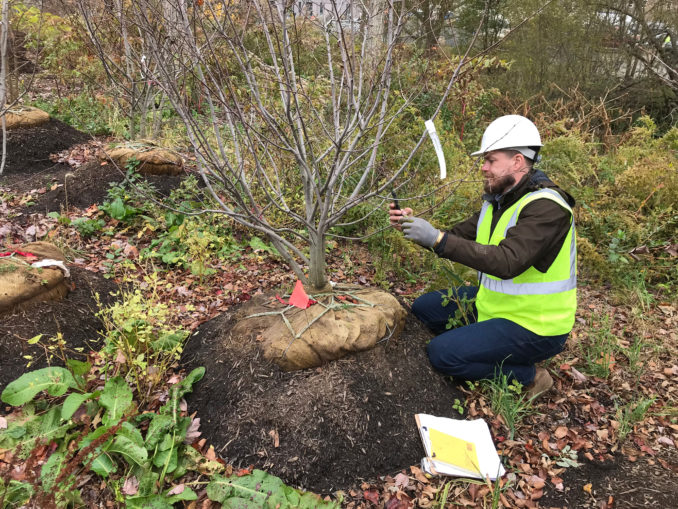
Image and Text credits
Co-written by the following Sasaki designers:
Michael Grove, ASLA, PLA
Zachary Chrisco, PE
Andrew Gutterman, ASLA, PLA
Philip Dugdale, ASLA, PLA
Radhika Mahan, ASLA, PLA
Steven Walz, ASLA, PLA
Andrew Sell
If you would like to publish your “Under Construction” projects please send them to submit@worldlandscapearchitect.com
